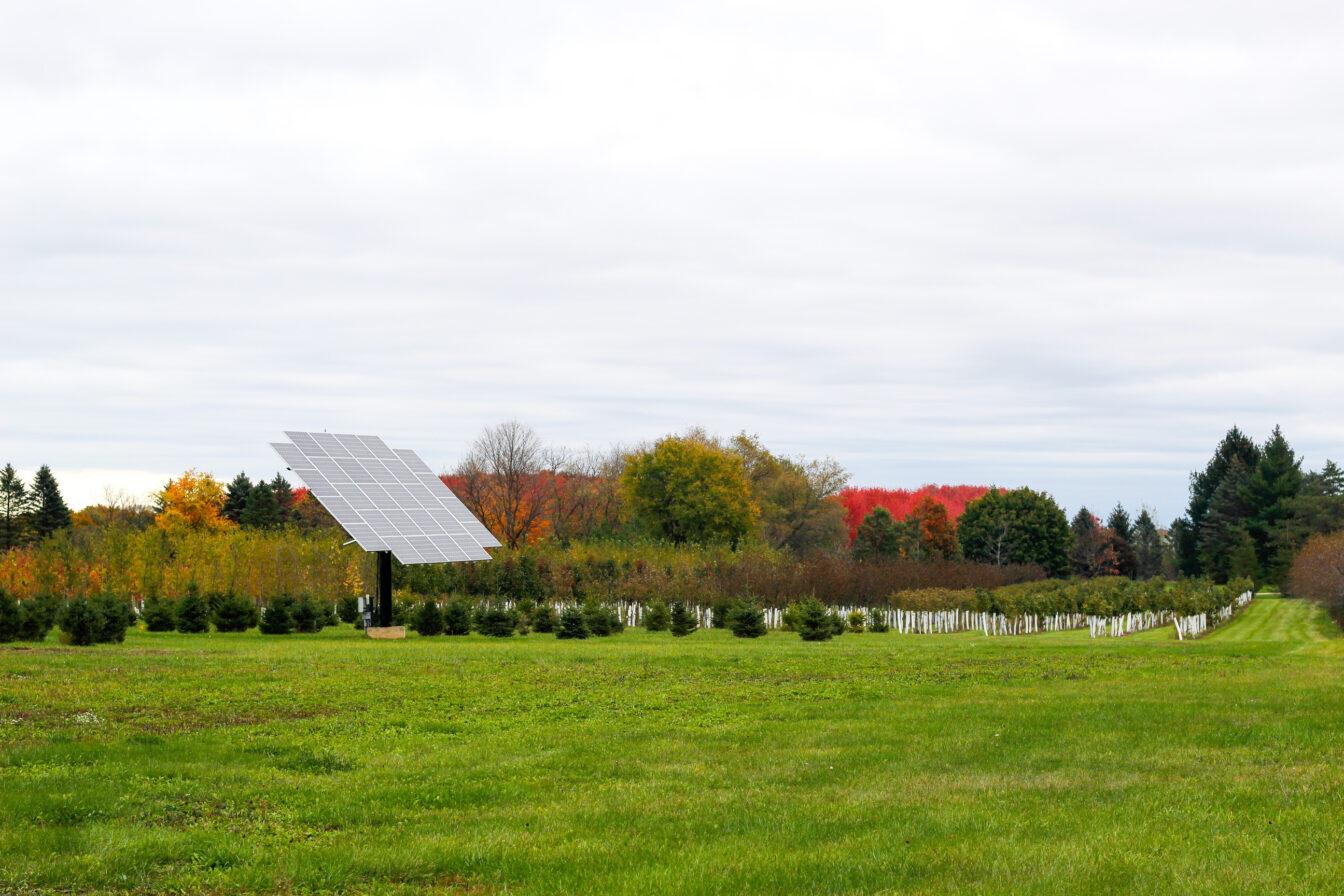Koshkonong Solar Energy Center, a planned 300-megawatt solar project slated to go into service in 2025, was approved for construction by the Public Service Commission last month.
The center, developed by Invenergy, will be located in southeast Dane County, and it will be one of the largest renewable energy sources in the state.
The project will financially support four to five dozen Wisconsin landowners in southern Wisconsin as well as the transition to clean energy for the state, Vice President of Renewable Development for Invenergy Dan Litchfield said.
“We’re really looking forward for this project to be able to deliver for the landowners who’ve signed up for this,” Litchfield said. “And everyone who flips on a light switch in Southern Wisconsin, especially if you’re in MG&E or We Energies territories, this is a big part of a transition to a clean energy future and we’re delighted and proud to be involved in it.”
One major benefit of the project is the 165-megawatt battery storage system. Clean energy advisor for the University of Wisconsin Josh Arnold said the battery storage is a unique and important part of the project.
Arnold said these batteries will be able to store and retain energy generated from the Koshkonong Solar Energy Center to provide power even if the sun isn’t shining.
Madison celebrates 50 years of conservation parks, Earth Day
As many coal-fired power plants in Wisconsin retire in the next few years, the project will decarbonize the energy grid by replacing coal-fired power plants and other fossil fuel electricity generation sources with clean electricity, Arnold said.
The peak generation for solar power is generally in the middle of the day, but the demand for electricity increases when the sun starts to go down, Litchfield said. The battery storage system will help match the supply and demand of electricity, Litchfield said.
“The combination of the solar and the storage together makes the generation more flexible, and they’re using this combination of solar and storage to replace coal,” Litchfield said. “And so that’s a big deal and we’re really excited that this technology can provide cost-effective energy and clean energy which is what electric users in Wisconsin seem to want.”
The project is expected to eliminate 15-20 million tons of carbon dioxide. The reduced emissions as a result of the project will improve human health, Litchfield said.
In terms of other environmental benefits, Litchfield said the center will plant prairie beneath the solar panels, using mostly native and perennial deep-rooted plants to stabilize the soil, improve soil health and reduce the amount of fertilizer, herbicides and pesticides. The prairie will improve water quality and create habitat for animals and pollinators.
Beyond environmental benefits, Litchfield said the project will contributor to a healthy economy given some family farmers see solar energy as a tool to keep their farms running. The project is also expected to generate $1.2 million every year in revenue divided among Dane County and the two host townships, Litchfield said.
Amidst first major avian flu outbreak in years, UW vaccine research underway
President of Madison Area Technical College Jack E. Daniels III wrote in support of the solar project, citing the creation of jobs for construction and maintenance as well as added economic and environmental benefits.
“In today’s globally competitive world, we need to encourage positive opportunities to diversify our economy with long-term growth,” Daniels wrote. “With this in mind, we ask the Public Service Commission to approve the Koshkonong Solar Project to stimulate job creation and new industry in south central Wisconsin.”
Arnold agreed that the project would create jobs for the construction and maintenance of the project. The project would also generate revenue for families, farmers and businesses through land leases as well as payments to local governments, Arnold said.
But some Dane County residents opposed the approval of the Koshkonong Solar Energy Center. Representing the School District of Cambridge, Superintendent Bernard Nikolay wrote in opposition to the Koshkonong Solar Energy Center with concerns of the project’s proximity to Cambridge Elementary School.
The opposition also included concerns about tax exemptions leading to a heavier burden on local taxpayers, reduced enrollment at the district’s schools and impacts on property values.
Other comments in opposition to the project raised concerns about the aesthetics of the solar panels, the halt of crop production on efficient croplands and property values, among others.
Still, Arnold said the Koshkonong Solar Energy Center is important for the campus community because UW is one of the largest electricity users in the state.
“Koshkonong is important for campus and for the larger community because it is a substantial project that’s going to help decarbonize Wisconsin’s electricity grid,” Arnold said. “Having 300-plus-megawatts of clean, renewable energy coming online helps decarbonize our electricity use just the same as it does other people or other businesses or homes within the greater Madison area. So, it’s definitely an important step in the right direction.”
Arnold said he is excited for the future of solar projects like the Koshkonong Solar Energy Center. With each new project, Arnold said everyone learns a lot.
The university is working on a solar project at the Kegonsa Research Campus that uses agrovoltaics. Agrovoltaics uses the space beneath solar panels for growing crops. There is a lot of room for creativity and innovation with solar projects like Koshkonong and the project at Kegonsa, Arnold said.
“With each one of these projects that gets proposed and eventually goes through the approval and public process, public comment process, I think everyone learns a lot,” Arnold said. “Hopefully as we continue to get more sophisticated — not just the solar developers, but also the local communities and the ag community — as we gain more experience with this we really can all work together to innovate and figure out where some of those win-win opportunities might be.”


















